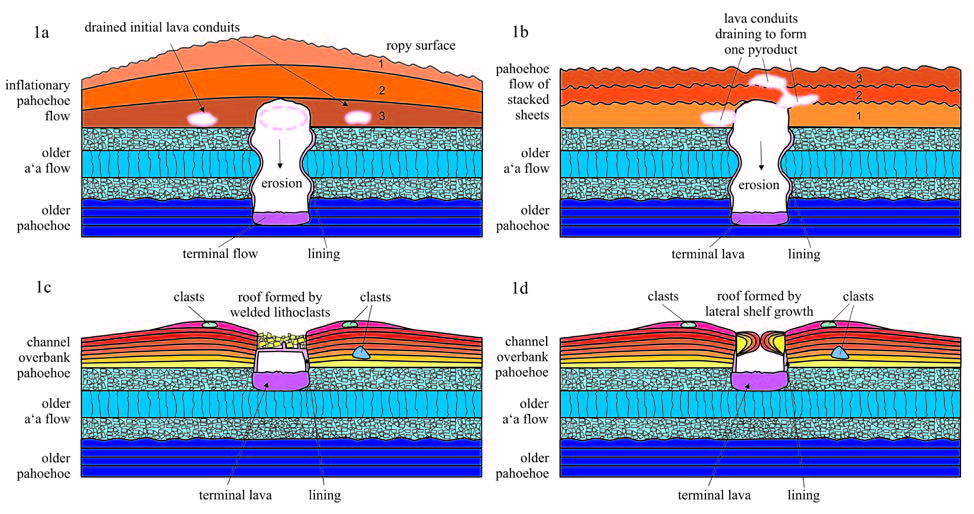Nova spoznanja o nastanku piroduktov Galapaškega otočja, Ekvador
DOI:
https://doi.org/10.3986/ac.vi.7587Ključne besede:
Ekvador, Galapaško otočje, vulkanske jame, pirodukti, jame v lavi, speleogenezaPovzetek
Raziskav o nastanku in razvoju piroduktov ali lavinih cevi na galapaških vulkanih je malo. Pirodukti so pomembni za bočni transport lave po izbruhu in so toplotni ščit med tokom lave in zunanjim ozračjem. Po končanem izbruhu ti kanali ostanejo dostopni kot lavine cevi. Marca 2014 je na Galapaškem otočju potekal 16. mednarodni simpozij o vulkanospeleologiji. V okviru tega smo obiskali in proučevali številne pirodukte na otoku Santa Cruz in v okolici vulkana Isabella's Sierra Negra na zahodnem, najaktivnejšem delu Galapaškega otočja. Delno smo izmerili najdaljšo, 3 km dolgo jamo Cueva del Cascajo in obiskali še devet drugih jam. Pri tem smo bili pozorni na strukturne elemente, ki kažejo na razvojne faze piroduktov, kot so debelina stropa, vrezovanje, prisotnost obvodnih rovov (oxbow), ostankov lavinih slapov, sekundarnih stropov, odprtin na površje (puka) in vdorov. Podatki in opažanja kažejo, da so jame nastale z zaporednim napredovanjem in napihovanjem, na kar kaže tudi primarni strop iz neprekinjenih plasti pahoehoe lave.. Nobeden od piroduktov ni nastal zaradi strjevanja lave nad tokom. Podobne ugotovitve veljajo tudi jame na vulkanih drugih vročih točk, kot na primer na havajskih vulkanih.
Prenosi

Prenosi
Objavljeno
Kako citirati
Številka
Rubrike
Licenca

To delo je licencirano pod Creative Commons Priznanje avtorstva-Nekomercialno-Brez predelav 4.0 mednarodno licenco.
Avtorji jamčijo, da je delo njihova avtorska stvaritev, da v njem niso kršene avtorske pravice tretjih oseb ali kake druge pravice. V primeru zahtevkov tretjih oseb se avtorji zavezujejo, da bodo varovali interese založnika ter da bodo povrnili morebitno škodo.
Podrobneje v rubriki: Prispevki




